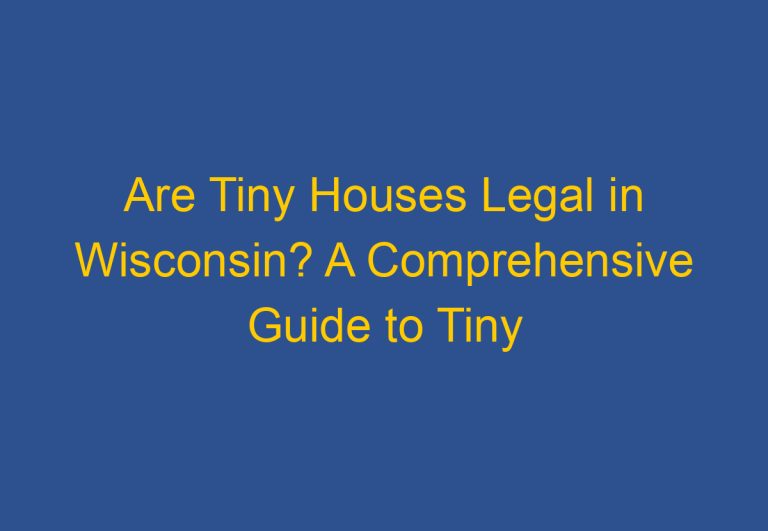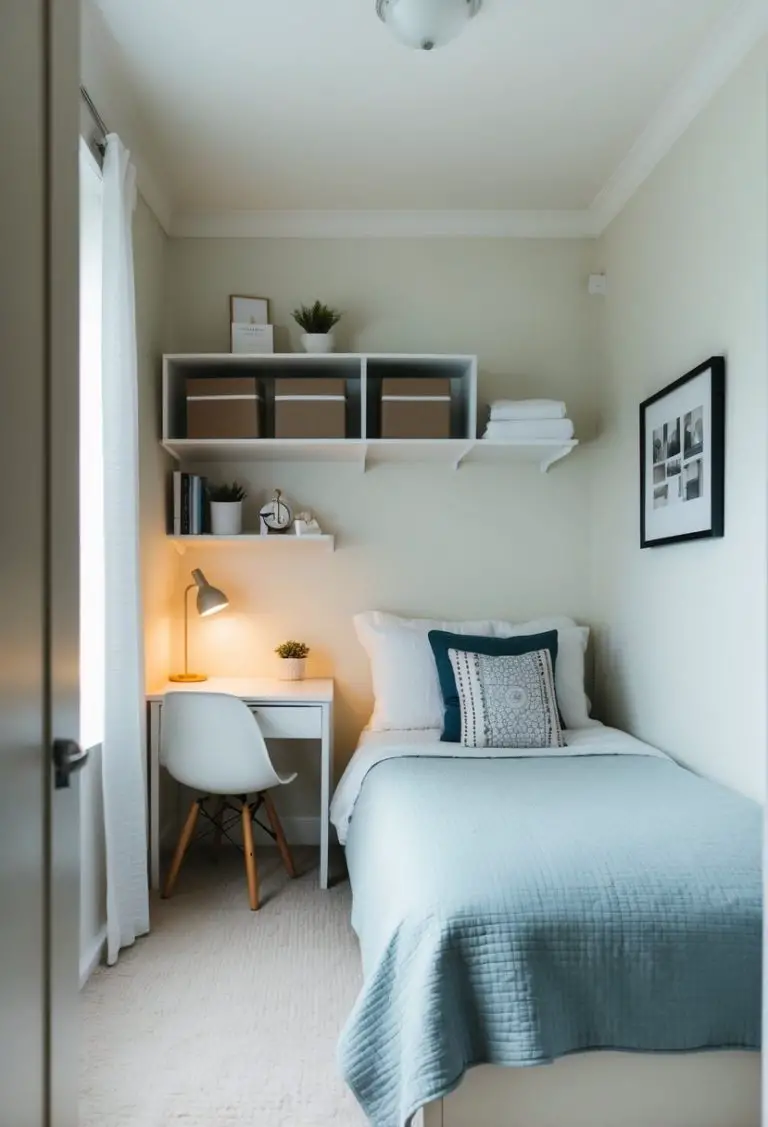Are Tiny Houses Legal in Connecticut? A Comprehensive Guide to Tiny House Regulations in the State
Tiny houses are becoming increasingly popular across the United States, thanks to their affordability and environmental friendliness. However, many people are unsure about whether tiny houses are legal in their state. In Connecticut, tiny houses can be legal, but it depends on various factors such as zoning laws and building codes in the particular town or city where the tiny house is located.
Local zoning regulations determine what types of structures are allowed in a given area in Connecticut. Therefore, it is essential to check with the local zoning board to determine whether a tiny house is allowed in a particular location. Furthermore, tiny houses are subject to all applicable state and municipal rules and the International Residential Code (IRC), although no particular state legislation governs them.
If you are considering building a tiny house in Connecticut, it is essential to do your research and ensure that you comply with all the necessary regulations. By doing so, you can avoid any legal issues and enjoy the many benefits of living in a tiny house, including reduced living expenses and a smaller environmental footprint.
Legality and Zoning Regulations in Connecticut
Connecticut has specific zoning laws and building codes that determine the legality of tiny houses in the state. While tiny houses are permitted in some areas of the state, it is important to understand the regulations that govern their construction and placement.
State Building Code and Tiny Houses
The State of Connecticut has adopted the International Residential Code (IRC) as its building code. The IRC includes Appendix Q, which provides guidelines for the construction of tiny houses on foundations. Appendix Q includes requirements for the minimum size of the house, ceiling height, and safety features such as smoke detectors and fire extinguishers.
Zoning Laws and Accessory Dwelling Units
In Connecticut, local zoning regulations determine what types of structures are allowed in a given area. Tiny houses are classified as Accessory Dwelling Units (ADUs) under zoning rules, which stipulate size and property setback limitations. The requirement for a principal residence structure, minimum lot sizes, and supplementary construction standards are some of the factors that determine the legality of ADUs in Connecticut.
Tiny Houses on Wheels Versus Tiny Houses on Foundation
Tiny houses on wheels are considered recreational vehicles (RVs) in Connecticut, and are subject to different regulations than tiny houses on foundations. RVs are not allowed to be used as permanent residences in most areas of the state. Tiny houses on foundations, on the other hand, are subject to the same regulations as other residential structures.
In conclusion, while tiny houses are permitted in some areas of Connecticut, it is important to understand the regulations that govern their construction and placement. The State Building Code and local zoning regulations are the primary sources of information for those interested in building a tiny house in Connecticut.
Building and Living in Tiny Houses
Building Codes and Compliance for Tiny Homes
When it comes to building and living in a tiny house in Connecticut, there are certain building codes and regulations that must be followed. The Connecticut State Building Code requires that all dwellings, including tiny homes, have a minimum of 150 square feet of living space. However, it is important to note that zoning laws in Connecticut vary by municipality, meaning that each town and city has its own rules regarding land use, building codes, and other regulations that apply to tiny houses. Therefore, it is essential to check with the local authorities to see if they have any additional or stricter requirements.
Lifestyle and Community Aspects of Tiny Living
Living in a tiny house is not just about downsizing to a smaller space, but it is also a lifestyle choice. Tiny house living is about simplifying one’s life, reducing expenses, and living a more sustainable and environmentally friendly lifestyle. Furthermore, tiny house communities in Connecticut are designed to provide a sense of community and shared experiences among residents. These communities often feature shared outdoor spaces, community gardens, and other amenities that promote a sense of belonging and connection.
Costs and Benefits of Downsizing to a Tiny Home
One of the most significant benefits of living in a tiny house is the cost savings. Tiny homes are generally more affordable than traditional homes, and they require less maintenance and upkeep. Additionally, downsizing to a tiny home can help individuals simplify their lives and reduce their environmental impact. However, it is essential to consider the costs associated with building and maintaining a tiny home. The cost of a tiny home can vary depending on factors such as size, materials used, and location. Therefore, it is crucial to research and budget accordingly before embarking on the journey of building and living in a tiny home.
In conclusion, building and living in a tiny house in Connecticut requires compliance with certain building codes and regulations. However, it is also an opportunity to simplify one’s life, reduce expenses, and live a more sustainable and environmentally friendly lifestyle. While there are costs associated with building and maintaining a tiny home, the benefits of downsizing to a tiny home can be significant.
Frequently Asked Questions
What regulations govern tiny house construction and placement in Connecticut?
In Connecticut, tiny houses are subject to all applicable state and municipal rules and the International Residential Code (IRC), although no particular state legislation governs them specifically. Zoning laws in Connecticut vary by municipality, meaning that each town and city has its own rules regarding land use, building codes, and other regulations that apply to tiny houses.
Can you legally reside in a tiny home on your own land in Connecticut?
Yes, you can legally reside in a tiny home on your own land in Connecticut, but it depends on various factors, such as the zoning laws and building codes of the specific town or city. Tiny houses on foundations can be legal in Connecticut, but you need to follow the same regulations and codes as any other house on a foundation.
What are the zoning requirements for tiny houses in Connecticut municipalities?
The zoning requirements for tiny houses in Connecticut municipalities vary by town and city. Some towns in Connecticut may prohibit living in a tiny house full-time, while others may allow tiny houses as accessory dwelling units (ADUs) or as a primary dwelling with certain restrictions. It is important to research the zoning requirements for the specific town or city where you plan to build or park your tiny house.
How does Connecticut classify tiny houses in terms of building codes?
Connecticut classifies tiny houses based on their foundation type. Tiny houses on foundations are classified as single-family homes and must meet the same building codes as any other house on a foundation. Meanwhile, tiny houses on wheels are often classified as RVs and require specific parking zones.
Are there designated tiny house communities within the state of Connecticut?
Yes, there are designated tiny house communities within the state of Connecticut. Tiny home communities in Connecticut are designed to provide a sense of community and shared experiences among residents. These communities often feature shared outdoor spaces, community gardens, and other amenities that promote a sense of belonging and connection. One such community is the Tiny House Village in South Windsor, Connecticut.
What are the legal considerations for purchasing a pre-owned tiny house in Connecticut?
When purchasing a pre-owned tiny house in Connecticut, it is important to ensure that the house meets all applicable state and municipal rules and building codes. It is recommended to have a professional inspection done to ensure that the house is in good condition and meets all safety requirements. Additionally, it may be necessary to obtain a permit to move the tiny house to a new location or to park it on a specific property.










